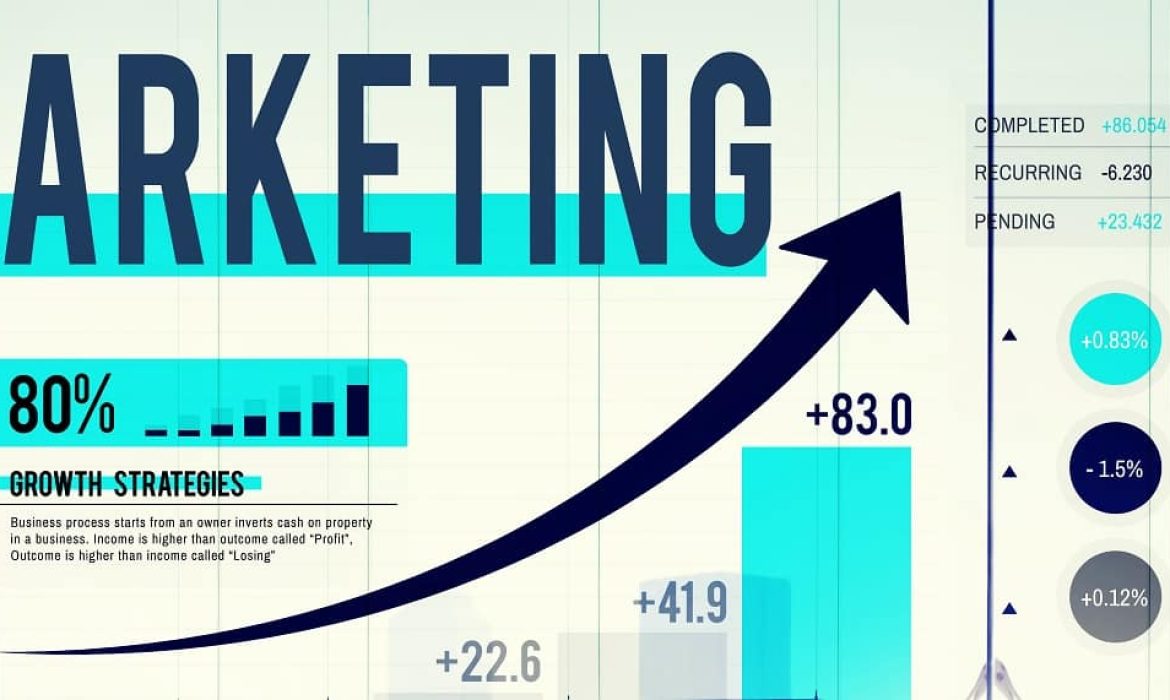E-Business Marketing Plan
E-commerce marketing is the method of achieving the maximum possible traffic to turn it into sales and customers.
What is e-business marketing
E-business marketing is the method of achieving the maximum possible traffic to turn it into sales and customers. And there are hundreds of ways to achieve this.

From focusing on organic traffic and SEO to using Facebook or Google ads to increase targeted traffic, you can combine and combine paid strategies with unpaid strategies, all in an effort to figure out which mix achieves the most and more advantageous conversions.
You may have heard, “If you build it, they will come.”
It’s a great phrase that might fit in a great movie. Unfortunately, this perspective often causes us to become overwhelmed when it comes to e-commerce marketing. When you build it, they do not necessarily come.
In an ever-changing and increasingly competitive environment, you need to make a greater effort to increase your online sales. For many businesses, this is the biggest reason why revenue targets are not met.
With US e-commerce revenue, indicatively, that is expected to reach $ 4.9 trillion in 2023, you do not want to miss the train.
On the one hand, simply creating a modern, feature-rich, and user-friendly site can seem daunting.
But if you only do that, you are only halfway there.
If you do not do what it takes to increase your visibility, your ecommerce site will be empty.
And this is not good for anyone – your business, employees and people who want to buy your products or services.
To grow an e-commerce business effectively – whether or not you have a physical presence in commerce or services – you need a well-designed e-commerce marketing plan to increase your brand awareness and increase sales. And there is no way around it.
But do not worry, we are here to help. On this blog, we cover the following topics:
- Creating and executing an electronic business marketing plan.
- Marketing channels, tactics and tools to consider.
- Creating a marketing team: Yourself vs Agent.
In this post, you will find the information you need to confidently create an e-commerce marketing plan that can effectively scale your business and achieve your goals.
Remember, there is no such thing as a “magic wand” when it comes to building brand awareness and increasing e-commerce sales.
The principles we have outlined should be defined as “best practices”, but your team ‘s ability to think critically and be creative will be the “stone’s” that your brand needs to accelerate sales growth.
Creating and executing an e-business marketing plan
The truth is that there is no shortage of literature on “how to develop a marketing plan”. In fact, many writers, teachers, and public speakers are concerned about this issue. And rightly so. Many tried and true principles remain relevant today, but with the constant development of e-commerce, this is not the time to be complacent.
Considering the basics of creating a marketing plan, here are some time-saving tips and apply specific e-commerce tips to finally create this 12-step plan that is perfect for building your online store.
With the information provided, you can confidently create an e-commerce marketing plan from scratch on your own, with your team or with a more experienced partner. Here are some time-saving tips and tips before you get started.
Seek mentors and advice
Find companies or individuals who have already created and developed a successful e-commerce business, ideally in the same industry. Then ask for their advice.
- How did they start?
- Which marketing channels generated the highest return on investment (ROI) in the short term?
- Did they use a consultant? If so, who?
- What technology did they use to track the data?
- Which SaaS platforms were most useful and effective?
Whenever possible, hire an expert.
Quite simply, the range of knowledge and experience that a talented and experienced consultant can bring to your business can not be underestimated.
If you are a startup, or an established business, consider hiring an experienced office to assist you with more complex parts of your business, such as branding, paid advertising or site maintenance.
This brings a new energy, fresh perspective and skills that complement your inner potential.
Be honest with yourself.
Without quality products or services, proper funding and a competent team, there is NO way to success. Of course, there are always exceptions to the rule.
It’s not a shame to start small and DIY your digital marketing in the short term. But it is important to set realistic expectations and outline a roadmap for development.
How to create an e-business marketing plan.
As you lay the foundation for the future of your e-business, it is important to follow these steps in writing your business plan to ensure that your methods and strategy are well thought out and will stand the test of time.
It can not be overestimated: these are the conditions for creating an effective marketing plan and building a successful business.
Executive summary.
Having gathered essential tips from all the available sources and your advisors, the big picture overview will be focused and complete.
By writing a summary, you will take the first steps in creating your e-business marketing plan.
Set your goals.
Make your goals VERY clear and specific.
Once you start executing your plan, it’s not bad to modify your goals if they turn out to be too low or too high.
So be sure to include specific goals and metrics, such as:
- Increase sales by X% during the low season.
- Increase AOV (average order value) by X% during the bidding period
- Increase email marketing conversion rates by X%.
Mission & value statement.
- What is the purpose of your business?
- What are you doing?
- What are you not doing?
You (or the company leadership) need to be able to answer these key questions.
Not all companies need a charity in the business (which would be nice), but there must be a clear mission and value statement.
Target customers, persons and markets.
Learn about your audience.
If you do not have a clear picture of who you are targeting, what their characteristics are and where they are located – you are likely to run ineffective money-making campaigns targeting low-conversion.
Make sure you know the following:
- Age areas.
- Gender analysis.
- Location.
- Purchasing capability.
Situation analysis.
Learn about your audience.
If you do not have a clear picture of who you are targeting, what their characteristics are and where they are located – you are likely to run ineffective money-making campaigns targeting low-conversion.
Make sure you know the following:
- Age areas.
- Gender analysis.
- Location.
- Purchasing capability.
Therefore, make a thorough analysis and evaluation of the current state of your business, the competition and the overall marketing plan.
A better understanding of your current situation will lead to better decisions and, ultimately, better results.
Pricing and placement strategy.
Make sure your pricing policy and placement really add value to your target audience.
Promoting products or services to your target customers that they consider to be overpriced is a lost cause, especially when price comparisons are SO easy these days.
Do your research!
Of course, there are opportunities for testing and improvement throughout the life cycle of your product, but by doing a little more work in advance, you will be better in the long run.
Distribution plan.
Even if you are just starting out, you need to have a clear picture of the ordering requirements that will evolve as you grow.
Whether you are packing and shipping yourself, overseeing a small group or utilizing a courier company, you need to know if your shipping processes can meet the demand of the upcoming marketing push.
After writing your plans, make sure you spend enough time modifying, refining and evolving them over time.
In Future Marketing we are ready and willing to help you in the implementation and development of your online business and to contribute to the success of your marketing plan.






